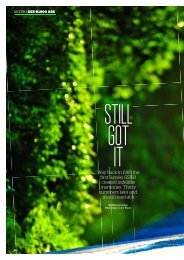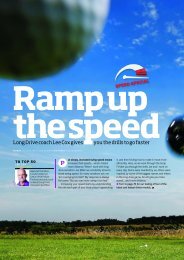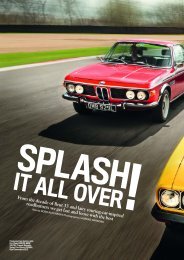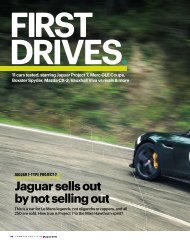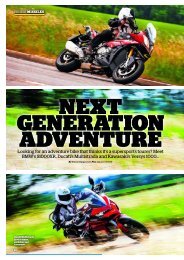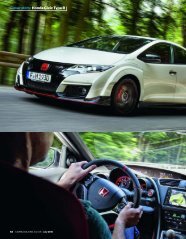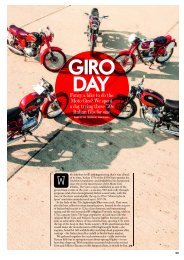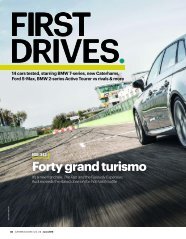Comeback kings
You also want an ePaper? Increase the reach of your titles
YUMPU automatically turns print PDFs into web optimized ePapers that Google loves.
BLUE HAZE: KAWASAKI TWO-STROKES<br />
to Stoplight racer’ – specially built for urban hooliganism.<br />
The H1 was Kawasaki’s first triple. It was launched with one<br />
single-minded aim: to cement the big-K’s reputation in riders’<br />
minds as a no-compromise performance brand, with the fastestaccelerating<br />
bike that the world had ever seen.<br />
Kawasaki called this secret endeavour Project N100. Make no<br />
mistake, they knew exactly what they were doing. And they did it.<br />
Mission accomplished (shock-horror headlines<br />
and a 12.8-second standing quarter were<br />
promptly achieved). The Japanese makers then<br />
began steadily civilising the bike over ensuing<br />
years by adding mid-range at the expense of<br />
top-end, handling at the cost of weight, and<br />
emissions-legality at the cost of free breathing.<br />
But not by very much. Any H1 is a hardrattlin’,<br />
smokin’ hoot. This B model offers a<br />
good compromise between most evil and least<br />
entertaining. Well, it’s got the newly-introduced front disc brake,<br />
anyway – even if it doesn’t have the wheelie-damping lengthened<br />
chassis of the following year’s model.<br />
TWIST YOUR WRIST AND HOLD YOUR BREATH<br />
Whichever model you ride, don’t expect anything in the way of<br />
mid-range power. Getting the H1B smartly off the line involves<br />
thrashy high revving, yowling intake noise and a glut of blue<br />
smoke. Shrinking violets need not apply. Once you’ve wound it up<br />
to the magic 6000rpm mark, all the bike’s claimed 60 horses kick<br />
in. That’s not much by the standards of today, but it still feels like<br />
‘THE H2 IS MORE<br />
STRAIGHT-LINE<br />
POWER, AND<br />
THAT’S IT’<br />
armageddon – thanks, not least, to the slump in power that<br />
preceded it. Yes, it’s a two-stroke, only worse. And better.<br />
The H2 is a complete contrast. When it first emerged in 1972,<br />
riders expected it to be more of the same. It is indeed that – more<br />
straight-line power, and that’s it. Rather like a narwhal’s tooth, the<br />
H2 is one single characteristic, taken to the extreme of extreme.<br />
But the manner in which it delivers its claimed 74bhp is<br />
completely different to the H1. The first clue to<br />
their relative power characteristics is revealed<br />
by their tachometers. The H1 redlines just<br />
short of 9000rpm, while the H2 hits the redzone<br />
earlier, at 7250rpm.<br />
As a Dutch H2 owner once told me, in his<br />
impeccable English: “This bike is like riding a<br />
wall of torque”. Indeed, the huge mid-range<br />
power feels far more like a four-stroke than a<br />
peaky, pipey two-cycle motor.<br />
Jump on either of the bikes and your first task is to get<br />
accustomed to Kawasaki’s strange old habit of putting neutral at<br />
the bottom of the gearbox. There’s nothing quite as embarrassing<br />
as giving it a handful in front of a crowd, dropping the clutch, and<br />
moving forward not an inch. It’s a problem that can prove<br />
seriously dangerous at junctions.<br />
With the H2, first impressions also include the bike’s<br />
considerable vibration. Some of these 750s’ cranks are so poorly<br />
balanced that it’s like holding on to a jackhammer. This one is<br />
comparatively civil. Open the taps and you are rewarded with a<br />
deep, guttural roar. The power delivery is so gloopily thick that it’s<br />
Q Two unsuspecting<br />
passers-by are subjected<br />
to the ‘all-seductive aura<br />
of candy-flake lethality’<br />
on Brighton prom<br />
38



